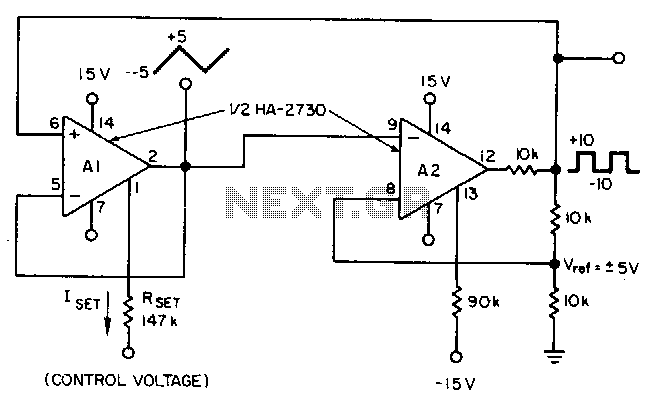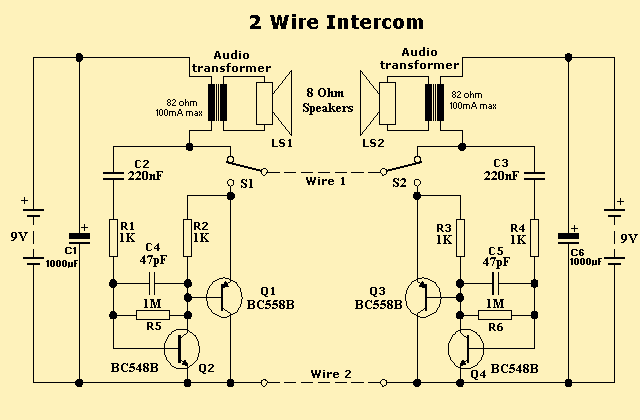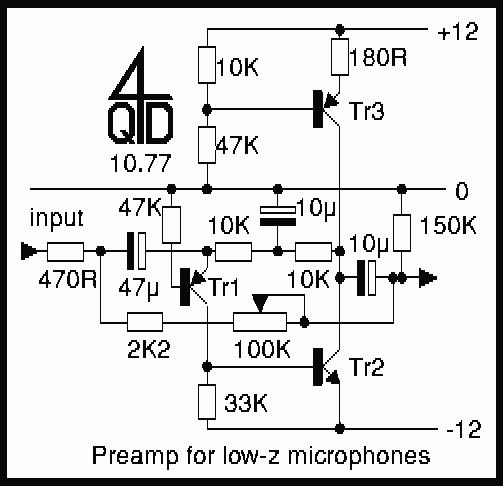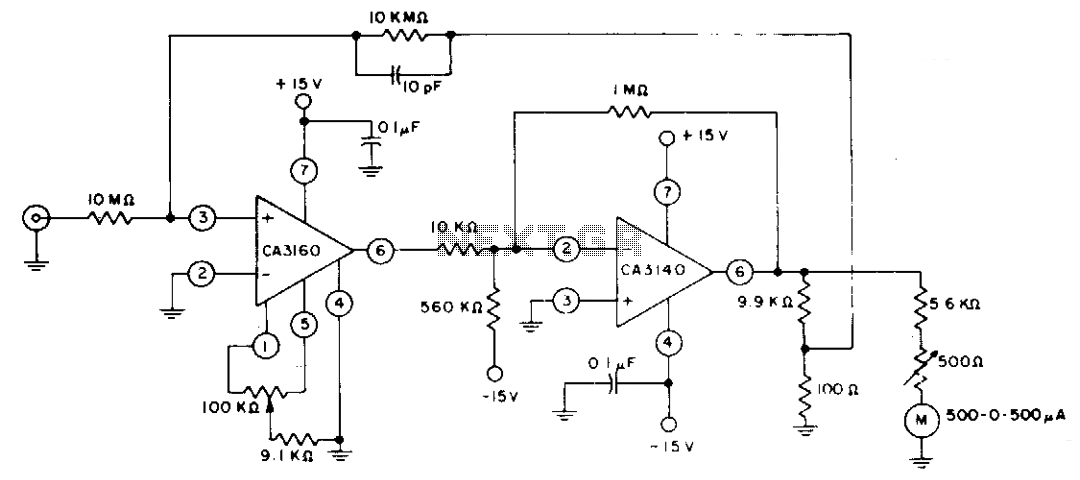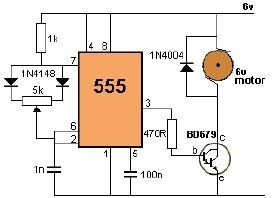
LM111 / 211/311 single voltage comparator circuit diagram
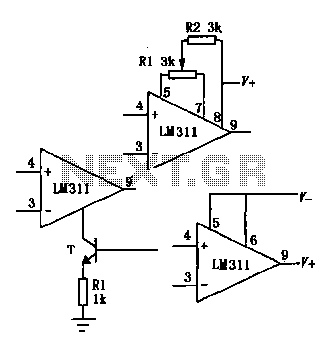
The LM111/211/311 power supply operates within a voltage range of 5V to 15V. It features bias current, offset current, and a differential input voltage range of 30V. The output is compatible with TTL, DTL, and MOS circuits, allowing it to drive LEDs and relays. Additionally, a single power supply can function as a dual power supply, providing output via emitter-collector outputs in two configurations. This comparator includes external balance adjustment terminals and a gating control terminal, which can be selected or adjusted as needed. The basic circuit configuration is illustrated in the accompanying figure.
The LM111/211/311 series consists of voltage comparators that are widely used in various electronic applications due to their versatility and performance characteristics. The ability to operate within a voltage range of 5V to 15V makes these devices suitable for battery-powered applications as well as standard power supply systems. The bias current and offset current specifications ensure that the device maintains accuracy in its comparisons, which is critical in precision applications.
The differential input voltage range of 30V allows for the comparison of a wide variety of input signals, making the LM111/211/311 suitable for both low and high-voltage applications. The compatibility with TTL, DTL, and MOS logic levels enables seamless integration into digital circuits, facilitating the design of complex electronic systems.
The capability to drive LEDs and relays expands the functionality of the LM111/211/311, allowing for direct control of visual indicators and electromechanical devices. This feature is particularly useful in automation and control systems where visual feedback or physical actuation is required.
The design flexibility is further enhanced by the option to configure the device as a dual power supply. By using emitter-collector outputs, designers can create circuits that require both positive and negative voltage supplies, accommodating a broader range of applications. The inclusion of external balance adjustment terminals allows for fine-tuning of the circuit, ensuring optimal performance in various conditions.
The gating control terminal provides additional functionality, enabling the user to control the operation of the comparator based on specific conditions or external signals. This feature is particularly valuable in applications where the comparator needs to be selectively activated or deactivated.
Overall, the LM111/211/311 series comparators are robust components that offer a wide range of functionalities suitable for diverse electronic applications, from simple signal comparisons to more complex control systems. The schematic representation of the basic circuit configuration serves as a useful reference for engineers and designers looking to implement these devices in their projects.Great LM111 / 211/311 power supply voltage range ( 5V ~ l5V), bias current, offset current, the differential input voltage range ( 30V), whose output is compatible with TTL, DTL and MOS circuits, and You can drive LEDs and relays . Single power supply can also be dual power supply with an output emitter-collector outputs and two forms. Such comparator also has external balance adjustment ends and gating control terminal, when used according to select or adjust.
The basic use of the circuit shown in Fig.
The LM111/211/311 series consists of voltage comparators that are widely used in various electronic applications due to their versatility and performance characteristics. The ability to operate within a voltage range of 5V to 15V makes these devices suitable for battery-powered applications as well as standard power supply systems. The bias current and offset current specifications ensure that the device maintains accuracy in its comparisons, which is critical in precision applications.
The differential input voltage range of 30V allows for the comparison of a wide variety of input signals, making the LM111/211/311 suitable for both low and high-voltage applications. The compatibility with TTL, DTL, and MOS logic levels enables seamless integration into digital circuits, facilitating the design of complex electronic systems.
The capability to drive LEDs and relays expands the functionality of the LM111/211/311, allowing for direct control of visual indicators and electromechanical devices. This feature is particularly useful in automation and control systems where visual feedback or physical actuation is required.
The design flexibility is further enhanced by the option to configure the device as a dual power supply. By using emitter-collector outputs, designers can create circuits that require both positive and negative voltage supplies, accommodating a broader range of applications. The inclusion of external balance adjustment terminals allows for fine-tuning of the circuit, ensuring optimal performance in various conditions.
The gating control terminal provides additional functionality, enabling the user to control the operation of the comparator based on specific conditions or external signals. This feature is particularly valuable in applications where the comparator needs to be selectively activated or deactivated.
Overall, the LM111/211/311 series comparators are robust components that offer a wide range of functionalities suitable for diverse electronic applications, from simple signal comparisons to more complex control systems. The schematic representation of the basic circuit configuration serves as a useful reference for engineers and designers looking to implement these devices in their projects.Great LM111 / 211/311 power supply voltage range ( 5V ~ l5V), bias current, offset current, the differential input voltage range ( 30V), whose output is compatible with TTL, DTL and MOS circuits, and You can drive LEDs and relays . Single power supply can also be dual power supply with an output emitter-collector outputs and two forms. Such comparator also has external balance adjustment ends and gating control terminal, when used according to select or adjust.
The basic use of the circuit shown in Fig.
